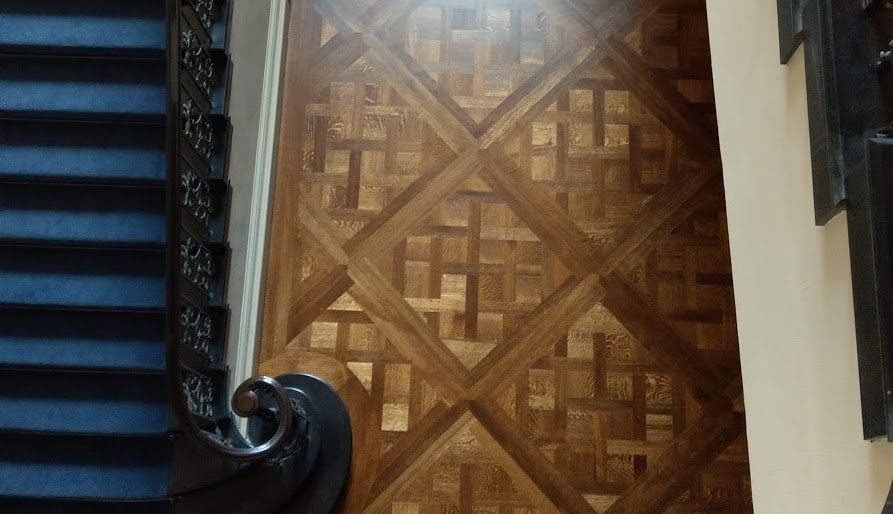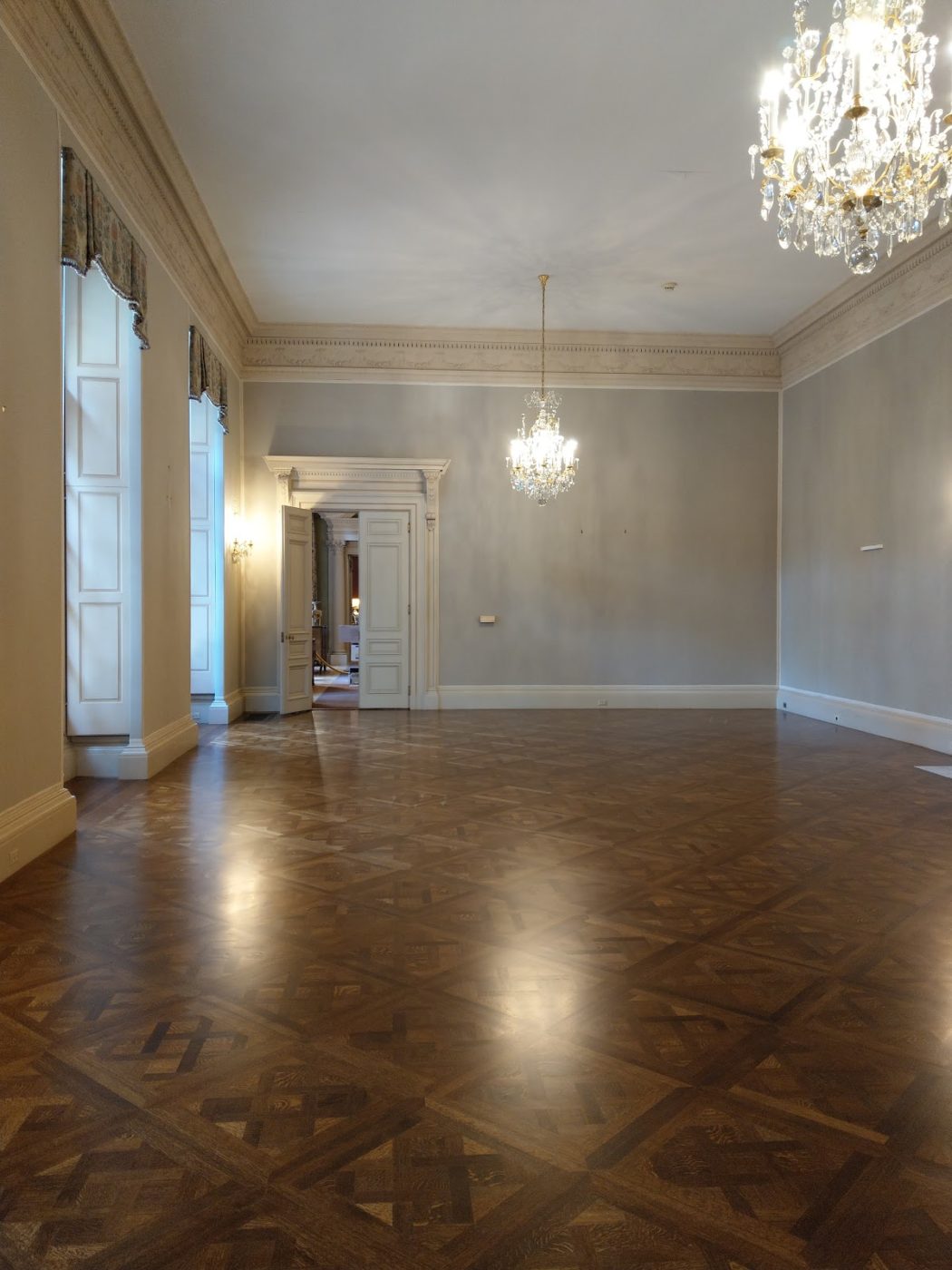Refinishing Filoli’s Oak Floors

By Julie Bly DeVere, Director of Museum Collections
Over the last few years, we have slowly been refinishing the floors in the main rooms of the House back to their historically accurate dark smoked oak finish.
The light oak look they have worn since the early 1980s was actually a modern change that drastically altered the look and feel of the rooms.
The Gentlemen’s Lounge floor was refinished in spring 2020 when COVID-19 measures kept the House closed. When Filoli was required to close the House again this winter, we took advantage of the opportunity it presented. While it is often possible to route visitors around a single room when work is underway, there is no way to avoid the Cloakrooms, grand hallway and staircase, or Reception Room. This amount of work required closing the House for a month or more.

Filoli’s inlaid floors were originally the creation of the Inlaid Floor Company of San Francisco. I had the honor of learning about them from a descendant nearly 10 years ago in one of my first investigative interviews about the history of the House and its creation. The Swedish brothers who owned the company were known in the early 20th century for their craftsmanship. They installed floors in many grand homes in the region, including sites as far away as Hearst Castle. Apparently, when they installed the floors at the Castle, they spent a summer camped in a tent near the construction site. I can imagine they enjoyed Filoli being closer to home, even if it was a bit out of the way at the time.

The Reception Room and transverse hallway floors are all laid in an intriguing parquet pattern known as the “parquet de Versailles” (Versailles parquet). This pattern was originally designed in 1684 as a new and glamorous addition to the grand rooms of the French king’s palace. It was used in a number of well-known rooms including the Hall of Mirrors, the War Room, the king’s guard rooms, and Madame Adélaïde’s cabinet. As with the original design, our floor is also separated by decorative bands that isolate each of the square panels. A keen observer may note this is not the only Versailles inspired decorative element found in the house. The Bourns installed crystal chandeliers and a fireplace surround in Filoli’s Ballroom that are also copies of elements in Versailles.

Our hunt to match the original stain color began with historic photos in the archives. By comparing different rooms, we were able to confirm which rooms matched in tone and color. We got lucky in that a few spaces upstairs had never been refinished and we were able to match those stains exactly.
The impact on the look and feel of the rooms is dramatic. It has been truly shocking just how much of a difference the color change has meant to the look of the collection items displayed in the rooms. The rugs look brighter and more colorful. Since the majority of the furniture in the collection is darker in finish, they suddenly look grounded and not as though they are sitting awkwardly on a light floor more akin to a modern gallery space.
With this work completed, we only have a few more spaces to go on the first floor, namely the Dining Room and the Ballroom. We are so grateful to four Filoli board presidents—past, present, and future—whose generous gifts made this floor refinishing possible. A special thank you Donna Colson, Carolyn Daley, David Wollenberg, and Carol Moran for their commitment to preservation at Filoli.
If you are interested in helping fund future restoration projects, please reach out to Filoli’s Development Office (development@filoli.org).
I hope this inspires you to look down and enjoy our fabulous floors during your next visit. The spacious rooms once again have a solid visual ground upon which we have just finished lovingly reinstalling our art and furniture collections.
